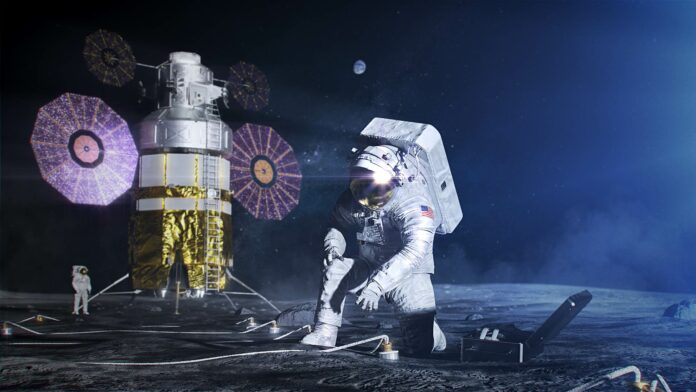Apollo 11 was the first spaceflight to land on the moon in the year 1969. We have always wanted to set a footprint on the moon, which we all along our childhood believed it as the land of cheese. Apollo 11 was one of the best and most successful missions in history. Fast forward to the present, several technological advancements later NASA decided to create a spacesuit with the use of AI to test permanent human survival on the moon.
The Extravehicular Mobile Unit or xEMU is NASA’s latest upgrade to its spacesuit nearly 40 years later. This is a project that started a few months ago with the objective the scientist wearing this suit shall test the chance of permanent rate of survival on the moon when they return in the year 2024. The suit is much more flexible than any other suits astronauts have used. They can stretch, turn, and remain intact for months, thus facilitating an easier life on the moon.
NASA had yet to release the biggest secrets to the public apart from what was displayed on the day of launch; inside is installed the life-support system of the xEMU suit- the astro backpack that turns from a bulky piece of fabric into a personal spacecraft. Furthermore, the spacesuit has power, communications, oxygen supply, and temperature regulation so that astronauts can focus on important tasks like building launch pads out of pee concrete. And for the first time ever, some of the components in an astronaut life-support system will be designed by artificial intelligence.
The mastermind behind the xEMU suit- Jesse Craft, a senior design engineer at Jacobs (major engineering company in Dallas) and other hundreds of designers carefully balancing each component of the spacesuit to build the life-support system without hindering the ability of movement of the astronauts. The challenge of designing this suit was to create a multipurpose spacesuit with reduced space. Being NASA’s target to launch this mission by 2024, the design engineers had little to no time to waste in procrastinating or brainstorming for ideas to find the ideal shape to create the spacesuit.
“We consider AI to be a technology that can do something faster and better than a trained human can do,” says Jesse Coors-Blankenship, the vice president of technology at PTC, the American company that made the software. The approach of using AI to create an engineered design is called generative design. Apart from other designing software, AI does a faster and efficient job. The basic idea is to feed the software a set of requirements for a component’s maximum size, the weight it has to bear, or the temperatures it will be exposed to and let the algorithms figure out the rest.
As the process of building the spacesuit and testing is still on-going, the hopes and expectations of building a life form on a new planet will be dreams come true.

